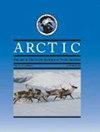育空地区和邻近西北地区1991-2020年气候预测的执行情况
IF 0.8
4区 地球科学
Q4 ENVIRONMENTAL SCIENCES
引用次数: 0
摘要
多年冻土基础设计认识到气候变化对土壤承载能力的影响,如加拿大指南CSA PLUS 4011:19所述。然而,对于这种设计最谨慎采用的气候情景,没有任何指导。我们将2003年为拟议的麦肯齐天然气项目(MGP)设计概述的气候变化情景与1991年至2020年的气候数据进行了比较,以确定最能代表实际发生情况的预测。在加拿大,过去50年来最大的气候变化发生在北极西部,那里的年气温波动在区域上是一致的。在该地区,1971 - 2020年的年平均气温变化率从NT Inuvik的0.77°C 10 -1到YT Komakuk Beach的0.30°C 10 -1不等,升温集中在冬季。没有观测到年总降水的统计显著趋势,这些记录在该区域内相关性很差。2003年,来自7个全球气候模型的29个气候预测被用于MGP, 2005年,用于育空地区森林火灾的研究。1991 - 2020年育空地区和邻近西北地区观测到的气候变暖与年平均气温和冬季气温的上预估接近。例如,在Inuvik, 1961 - 1990年和1991 - 2020年期间观测到的年平均气温上升2.3°C,超过了到2010 - 39年变化的中位数预测(+1.6°C),接近+2.4°C的最高值。观测到的降水和预估的降水之间没有一致性。这些结果表明,当需要时,加拿大西北部未来的温度预测可能会谨慎地采用更高或更极端的情景,因为它们迄今为止是最现实的。这意味着,该地区南部的近地表永久冻土可能很快就会变得不可持续,因此,对新项目进行现场调查,以确定融化稳定的土壤,可能会具有成本效益。本文章由计算机程序翻译,如有差异,请以英文原文为准。
Performance of Climate Projections for Yukon and Adjacent Northwest Territories, 1991 – 2020
Permafrost foundation design recognizes the impact of climate change on soil bearing capacity, as described in Canadian guideline CSA PLUS 4011:19. There is, however, no guidance as to the climate scenarios most prudent to adopt for such design. We have compared climate change scenarios outlined in 2003 for the design of the proposed Mackenzie Gas Project (MGP) with climate data for 1991 – 2020 to determine the projections most representative of what did, in fact, occur. In Canada, the greatest change in climate during the last 50 years has been measured in the western Arctic, where fluctuations in annual air temperatures are regionally consistent. In this region, the rate of change in annual mean air temperature for 1971 – 2020 has ranged from 0.77 °C decade-1 at Inuvik, NT, to 0.30 °C decade-1 at Komakuk Beach, YT, with warming concentrated in winter. No statistically significant trends in total annual precipitation have been observed and these records are poorly correlated within the region. In 2003, 29 climate projections from seven global climate models were examined for the MGP and, in 2005, for research regarding forest fires in Yukon. The observed climate warming in Yukon and adjacent Northwest Territories during 1991 – 2020 was close to the upper projections for mean annual and winter air temperature. For example, at Inuvik the 2.3 °C increase observed in mean annual air temperature between 1961 – 90 and 1991 – 2020, exceeds the median projection for change by 2010 – 39 of +1.6 °C and approaches the upper value of +2.4 °C. No consistency between observed and projected precipitation has been determined. These results indicate that, when required, future projections of temperature in northwest Canada may prudently adopt higher or more extreme scenarios because they have been the most realistic to date. They imply that near-surface permafrost may soon become unsustainable in southern parts of the region and so site investi gations to locate thaw-stable soils will likely be cost effective for new projects.
求助全文
通过发布文献求助,成功后即可免费获取论文全文。
去求助
来源期刊

Arctic
地学-环境科学
CiteScore
2.30
自引率
0.00%
发文量
51
审稿时长
6-12 weeks
期刊介绍:
Arctic is a peer-reviewed, primary research journal that publishes the results of scientific research
from all areas of Arctic scholarship. Original scholarly papers in the physical, social, and biological
sciences, humanities, engineering, and technology are included, as are book reviews,
commentaries, letters to the editor, and profiles of significant people, places, or events of northern
interest
 求助内容:
求助内容: 应助结果提醒方式:
应助结果提醒方式:


